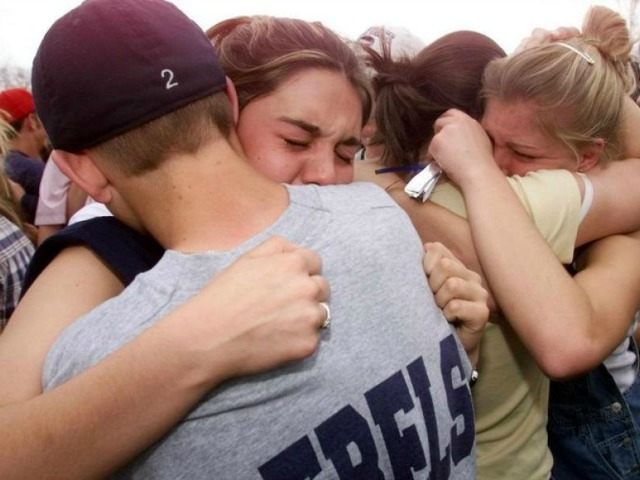Speaking at The New Yorker Festival on October 3, The New Yorker magazine author Malcolm Gladwell placed the blame for school shootings around the world at America’s feet by describing them as “an overwhelmingly American phenomenon.” He added, “To the extent that anything like [school shootings] happens anywhere else in the world, it appears to happen as a reflection of something going on [in America].”
Gladwell began his presentation by describing Barry Loukaitis’ February 1996 attack on Frontier Middle School and suggesting this attack marks the start of “school shootings as a phenomenon in American life.” Loukaitis killed two fellow students, then shot and killed his algebra teacher. From there, Gladwell touches on six other attacks, and then mentions Columbine, the April 1999 attack Gladwell considers seminal in school shootings.
From Columbine, Gladwell argues, “Things take off.” He said, “We go through Virginia Tech. Remember, 32 people and 17 wounded. And then, you get the 27 people killed by Adam Lanza at Sandy Hook in 2012, right up to the ten shot [at Umpqua Community College].”
It should be noted that Gladwell either misspoke or intentionally counted the gunman’s death in some of these figures. For example, 26 innocents were killed at Sandy Hook. Then Lanza took his own life. And nine people were killed at UCC. The gunman then took his own life.
Gladwell continues:
If you look at this history, two things stand out immediately. One is that this is a very contemporary phenomenon. There is very little that happens of this sort before 1996. The second thing that’s obvious if you look at the history of school shootings is that it’s an overwhelmingly American phenomenon. To the extent that anything like this happens anywhere else in the world, it appears to happen as a reflection of something going on [in America]; it appears to have spread from America.
Gladwell went on to use Columbine as the school shooting pattern copied around the world. He quotes Columbine gunman Eric Harris saying that “he [wanted] to kick-start a revolution.” He said Harris intended to be a “kind of father of the whole school shooting movement,” and he asserts that this is exactly what happened.
Gladwell points to sociologist Ralph Larkin’s work and states, “[In] the 12 major school shootings that happened in the eight years after Columbine, more than half explicitly referenced Columbine.” He continued:
If you look at the 11 shootings that were major shootings that happened overseas immediately after Columbine, six of them are, again, versions of Columbine. And if you look between 1999 and 2007, there are 11 cases of thwarted school shootings, where it really does seem like the kids are really going to go through with it. And in all 11 of those cases, it’s Columbine.
Ironically, Gladwell does not mention gun-free zones, which provide a common characteristic for school shootings that one does not have to mention with caveats. Whereas certain years have to be selected and examined to make the Columbine theory applicable, gun-free school zones are, unequivocally, the repeatedly target.
Of course, it is far more difficult to lay the blame for school shootings at America’s feet if the predominant characteristic is a top-down gun-free policy, rather than the rantings of a Colorado school shooter in 1999.
Follow AWR Hawkins on Twitter: @AWRHawkins. Reach him directly at awrhawkins@brietbart.com.

COMMENTS
Please let us know if you're having issues with commenting.